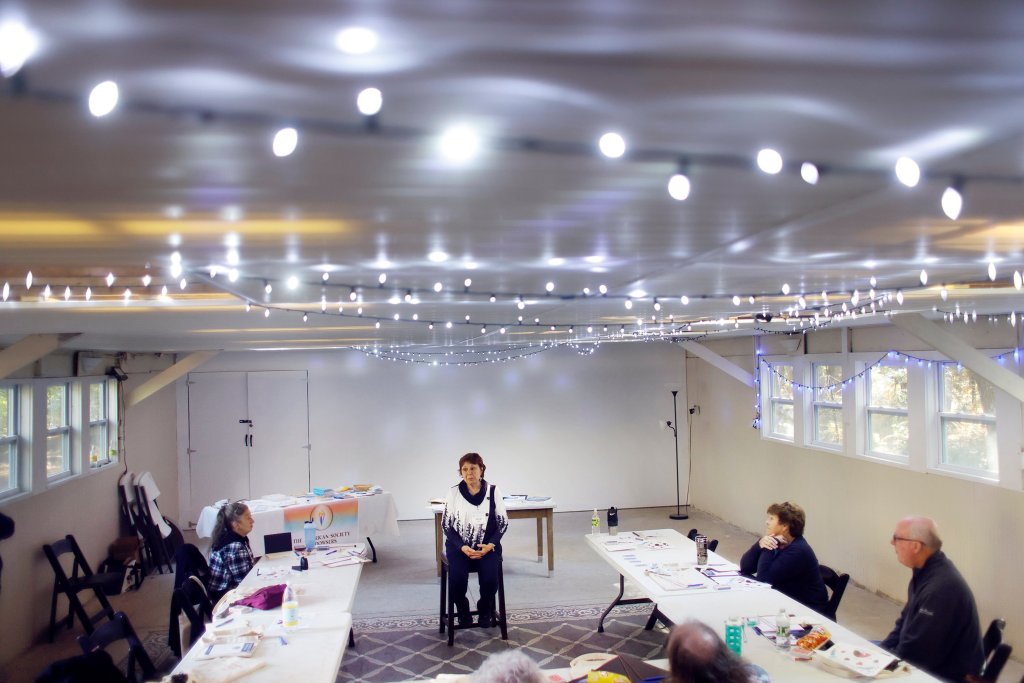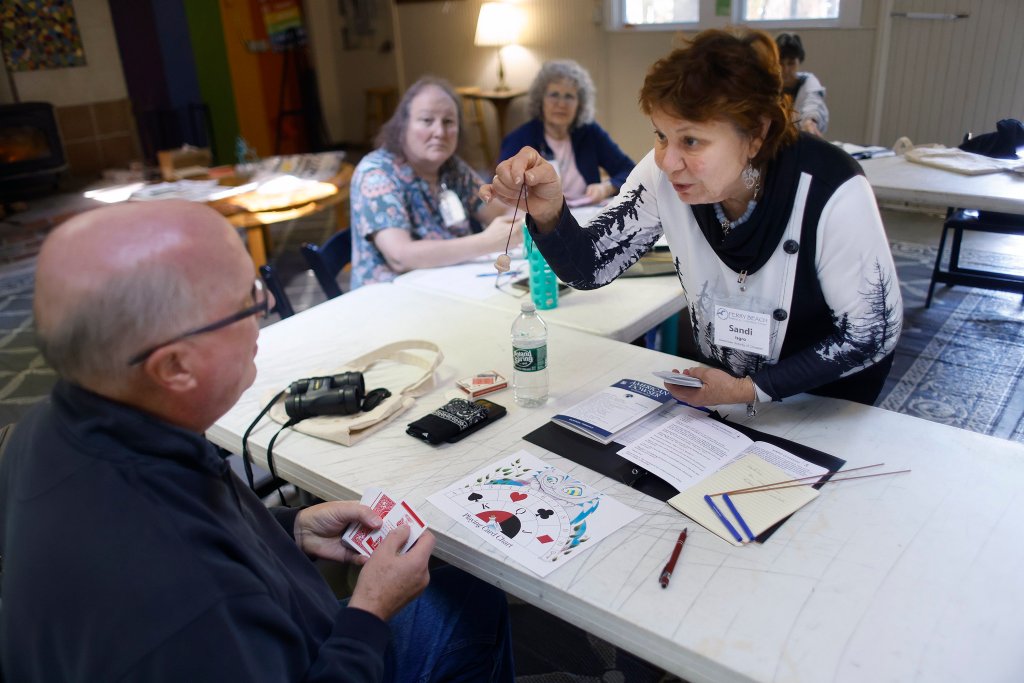
SACO — Sitting around folding tables, the handful of students in the beginner dowsing class at Ferry Beach Retreat & Conference Center each held two L-shaped copper rods by the short ends and started asking questions they knew the answers to: Is my name Lee Ann? Am I wearing pink underwear?
The point was to see what position the longer part of the rods would move into for each person when the answer was “yes” or “no,” so they’d know what to look for when they turned to them for information, like whether to take a certain supplement or where to find an underground water source — dowsing’s best known use, demand for which can increase during droughts.
For me, who sat in on part of the daylong workshop in early October, the tips of the two rods pointed toward each other when the answer was negative, and the left one seemed to swing out in the affirmative. As an apartment dweller in a tight housing market, I’m not likely to be drilling a well anytime soon, but I could see how this might come in handy for my chronic indecisiveness.
Instructor Sandi Isgro asked the room whether people were getting consistent responses. I had to nod.
“How cool is that?” she said.
Isgro, 71, chef and owner of the White Wolf Inn in Stratton, is also the president of the American Society of Dowsers, a nonprofit organization that was founded in Vermont in 1961 and now has more than 1,100 members worldwide. Its primary mission is to disseminate knowledge about the practice, which can be traced back at least to 16th century Germany, and it regularly holds classes online and in person.
Most mainstream scientific and academic sources on the subject refer to dowsing as a pseudoscience that’s no more accurate than random chance, but Isgro can produce plenty of research to the contrary, including in its use by the U.S. military and its effect on brainwaves.
She says there’s no known explanation for why it works but that “there’s way too much evidence” for her to doubt that it does. “Way, way too much.”
Isgro describes dowsing as a method of tapping into the electrical fields all around us, the same ones that can give us a weird feeling when we walk into a room or make us step away from someone who gets in our space.
“It’s a natural talent that can de developed,” she said. “Every human being can dowse.”
Isgro started practicing dowsing 28 years ago, almost by accident. She had signed up for a retreat held at a boys camp in upstate New York, intending to participate in a sweat lodge that she hoped would help free her of the baggage from her recent divorce. But when she arrived at nighttime without a flashlight, she couldn’t find the building where her orientation was being held and had to switch workshops. She ended up in one that showed how use dowsing to place a labyrinth.
“I was blown away,” she said.
Isgro uses dowsing to find optimal sites for wells — and helped Maine Huts & Trails locate theirs — but also in everyday life, like when her cat is sick and she wants to know if she should switch up her food.
Working at the inn, she’s had conversations with Mainers who learned to dowse from elder family members or do it themselves quietly. She acknowledged the stigma around the practice during the class in Saco, while talking about dowsing supplements in a store.
“People do think you’re weird,” she said.

To dowse less conspicuously, you can uses a pendulum — which the students received in the form of a wooden acorn on a string — or even your body.
At the beginning of the $300 workshop, Isgro and her assistant, Zythea Berry, who is also the sous chef at the inn, showed how effective body dowsing can be.
Berry went around to the students, one by one, asking them to stand. They included a real estate broker from Casco, a financial adviser from Massachusetts and the executive director of the event center, where the dowsing society plans to hold its annual conference in the spring. Against each of their backs, she held a plastic bottle of water, then another bottle with an unknown clear substance, watching to see if their bodies fell toward the bottles or away from them.
Skeptics say that the responsiveness of dowsing rods, which also come in a Y-shape, can be attributed to small, unconscious movements by the person holding them, who might be picking up on other clues that lead them to successful answers.
In the case of the bottles, though, no one knew until afterward that the second contained a poison, but everyone’s body leaned away from it.
Could we all have subconsciously assumed that, since water is good for us, the other bottle was probably bad?
Maybe, but later that day, I still let the rods help me decide what to eat for lunch.

We invite you to add your comments. We encourage a thoughtful exchange of ideas and information on this website. By joining the conversation, you are agreeing to our commenting policy and terms of use. More information is found on our FAQs. You can modify your screen name here.
Comments are managed by our staff during regular business hours Monday through Friday as well as limited hours on Saturday and Sunday. Comments held for moderation outside of those hours may take longer to approve.
Join the Conversation
Please sign into your CentralMaine.com account to participate in conversations below. If you do not have an account, you can register or subscribe. Questions? Please see our FAQs.